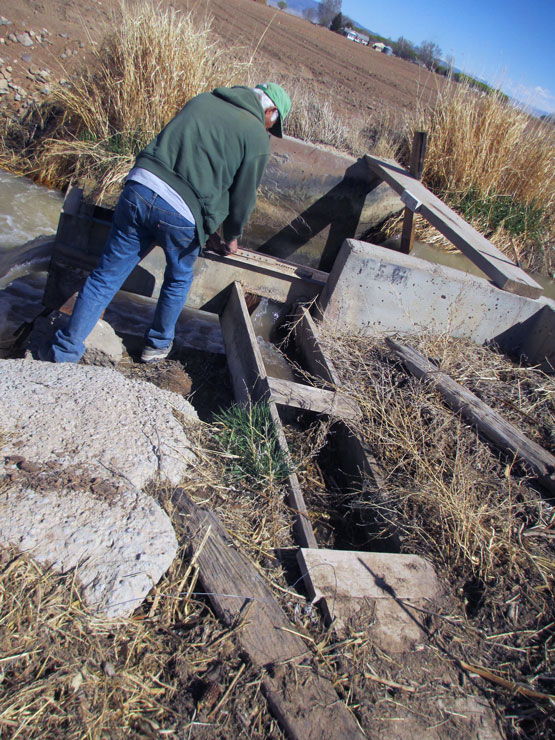After Terry marked out (put furrows) the cornfields, and the alfalfa fields
He made all the earth ditches, which carry the water onto the fields
Then he went back to the bottom each and every field to make the shallow waste ditch….this is the ditch, which catches the water, then moves the water to the next field or to the canal.
Then it was time for us to start the water onto the land. You are looking at Terry opening the headgate and the water starting into the headgate
The water starts down the cement ditch where the trash is forked out by Terry and me
There is always lots and lots of trash; thanks to the cows (it gets caught in their hooves) and the wind.
There are lots of cement ditches on our place, so lots of forking out of the trash.
I always think how grateful I am for my arm muscles and for the ability to straddle the cement ditch — still, at my age. 🙂
Now we start setting the siphon tubes. (See that pooling of water—not good, we have to go out there and dig the furrow out and dam up the spots where the water broke out.)
There is no wasting of the water. Ever. Please don’t think that. We water several fields all at the same time…water that runs by one field is put on another field, the water that goes to the end of the field goes onto another field.
And we work at it constantly. Water checks every two hours to make sure nothing is happening, which shouldn’t be happening—like trash in the ditch causing the water to spill over the side, or trash in the furrow causing two (or more furrows) to run together, or trash in a tube stopping the water altogether.
To put in dams one must straddle the ditch again.
The over-flow of this dam, tells us we need to start two more tubes.
No waste. Ever!
One last time…one more check before the sighing of the night wind takes over.
Your friend on a western Colorado farm,
Linda














